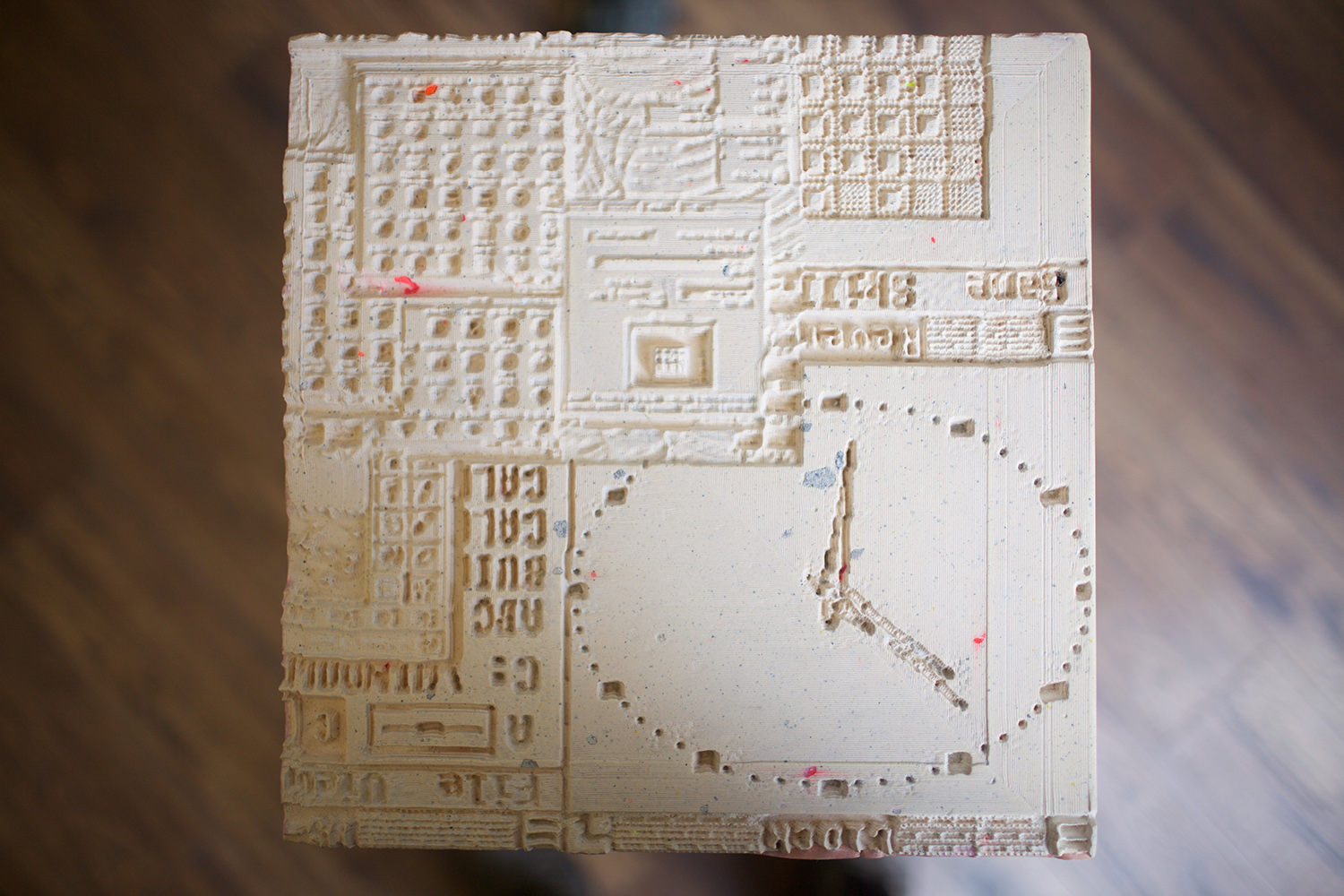In their collaborative exhibition, Miguel Angel Salazar and Carlos Iván Hernández have produced a body of work that references the myths created when paleontology was a new field— myths also mirrored during the development of computer operating systems in the early 90s. Combined, the work illustrates the conformity of an ecosystem of the forgotten and the obsolete displaced both by technological and scientific advances.
How would we trace the history of the world if there was indeed a singular narrative through which to arrive at the present state? If our world was once purely darkness in the face of the deep, what would the natural progression of the past be in order to arrive at the present? The stratigraphy of the earth lends itself to a certain amount of data through which we can deduce trajectories of natural progressions, and within these progressions we can further strategize both convergences and divergences. There exists in any age of science a set of limitations and doubts through which any effective person of learning must speculate. However, our geological time scale offers enough answers through which we are able to fill in the blanks of moments with little to no existing data, and thus tell the story of the history of life.
Just as geology once—and often still helps us to understand how the maker set into motion his genius design—so too did he instill in man the genius of which to create advancement with their bare hands.
This technology, and specifically, the computer was the first machine that allowed and absolved man of rational speculation alone. Indeed, the computer allowed for both science and aesthetics to overlap upon one another. The screen at once allows the eye to see and read beyond the pages of a physical book, but simultaneously allows for the aesthetic beauty of a romanticized nature to fill its plane when not in use. Its machinations operate like the brain, storing information and data, and supplementing the great and superior mind. Indeed, technology has advanced in ways beyond the natural succession of progression, or an advancement faster than what providence has seen compared to the natural surface of the globe.
While the physical earth may offer the veneer of calm stability, it has not always been so. It has indeed had its convulsions, revolutions, and has been both wasted then repaired in a process of diminution and decay. It is destroyed and destroys in order to renew and be renewed.
The fossils that we have found under the geologists pick-axe have shown us both the development of animals as they inhabited the earth, and descriptions of the physical forms they took. The great Megalosaurus and Iguanadon struggle for power, baring their sharp teeth as they penetrate the thick leather skin of the enemy. Their physical bodies are composed of a significantly different structure than modern mammals which allows them to slither and move almost unnoticed through the landscape, save for the occasional territorial squabble. Indeed, time allows for change and evolution to occur, both in the body and the landscape.
As these revolutions and cycles of the earth continue, we see in them the advances that man makes, and the leaps and bounds of the human brain remain the greatest of all.
Man has made systems for this computer which have further revolutionized the progress we see for the present, and offer new perspective for a future. From its inception, technology and specifically computer advancement has revolutionized human progress in ways unprecedented and unrivaled.






































